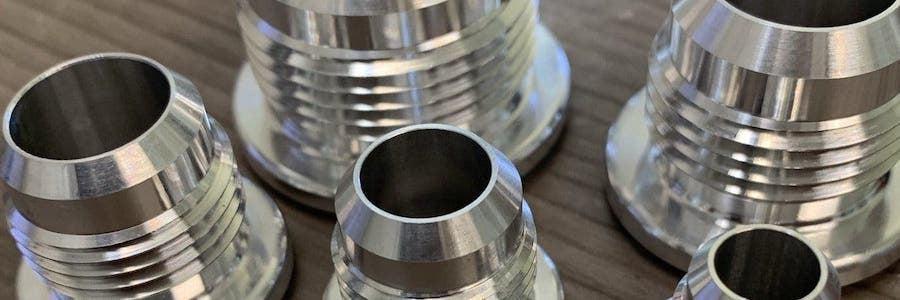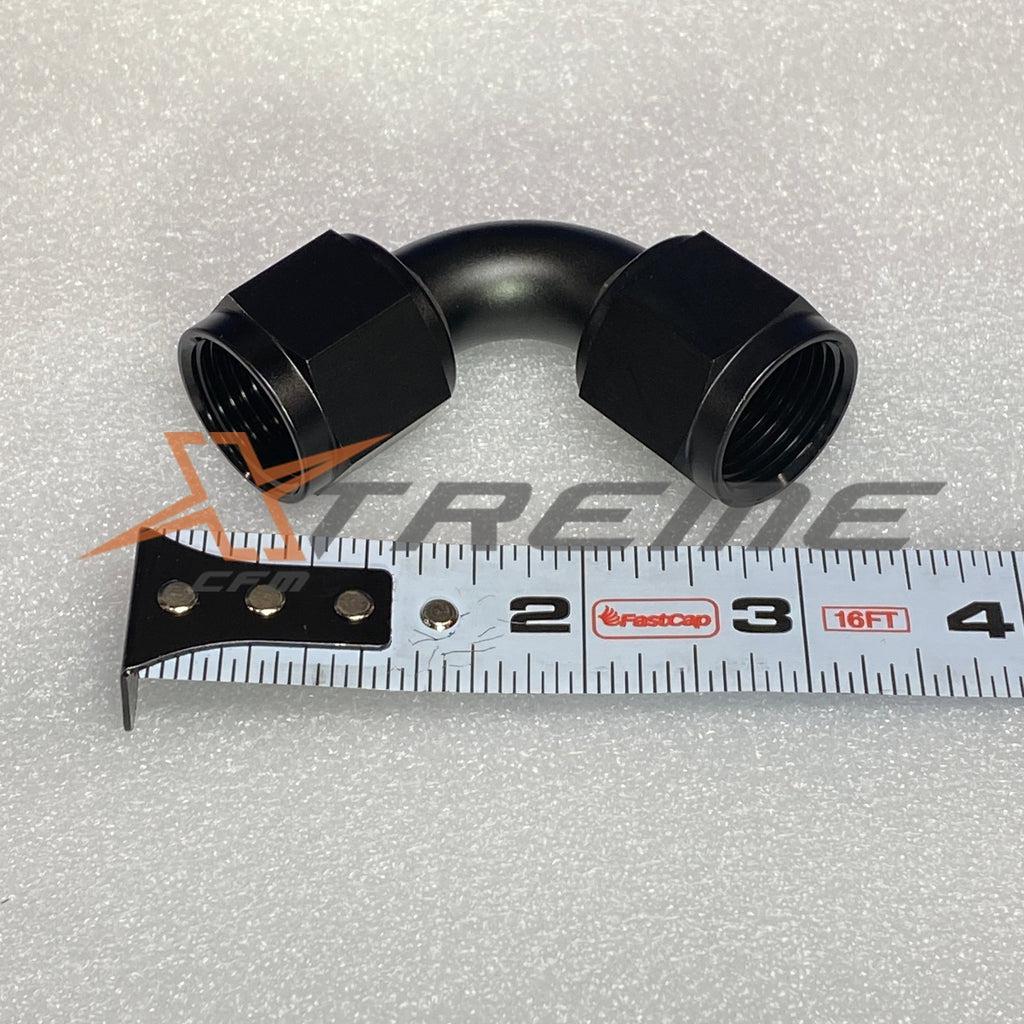
The "Army-Navy" (AN) Fitting
We see them everywhere. We use them on our builds but where did they come from and why are they a staple in the automotive industry? Let's take a sec and delve into the history of these versatile and reliable fittings, explore their various sizes and applications, and introduce you to some innovative designs that we've done to enhance flow and provide seamless integration with OEM systems.
A (Very) Brief History of AN Fittings
AN (Army-Navy) fittings were first developed during World War II for use in military aircraft hydraulic systems which required reliable, leak-free, high-pressure hydraulic systems to operate various components such as landing gear, flaps, and control surfaces. The traditional fittings used at the time were not able to meet the rigorous demands of these applications, so a new type of fitting was needed. As a result, the AN fitting was developed to provide a robust, standardized solution that could withstand extreme pressures and temperature conditions encountered in military aviation.
AN fittings, also known as JIC (Joint Industrial Council) fittings, feature a 37-degree flare angle, which creates a metal-to-metal seal when tightened. This design proved to be highly effective in preventing leaks, even under the most challenging conditions.
Automotive Applications of AN Fittings
After World War II, the automotive industry began to recognize the benefits of AN fittings for high-performance applications. The durable design and high-pressure capabilities of AN fittings made them an ideal choice for race cars and other high-performance vehicles that demanded reliable fluid connections.
In the years following the war, advancements in automotive technology and the growing popularity of motorsports led to increased demand for high-performance parts, including AN fittings. As a result, the adoption of AN fittings in the automotive industry grew steadily.
By the 1960s and 1970s, AN fittings had become a standard feature in many high-performance automotive applications, including fuel, oil, and coolant systems. Their ability to provide secure, leak-free connections in demanding environments made them indispensable in the world of motorsports and performance vehicles.
Today, AN fittings continue to be a popular choice in the automotive industry, particularly for custom builds and performance applications. Their reliability, versatility, and wide range of sizes and styles make them a preferred option for enthusiasts and professional builders alike.
Understanding AN Fitting Sizes
AN fittings are available in a range of sizes, with each size denoted by a dash number (-X), where X represents the nominal size in sixteenths of an inch. Here's a handy table to help you understand the various sizes and their corresponding metric and imperial measurements:
| AN Size | Hose ID (in) | Hose ID (mm) |
|---|---|---|
| -2AN | 1/8" | 3.2mm |
| -3AN | 3/16" | 4.8mm |
| -4AN | 1/4" | 6.4mm |
| -5AN | 5/16" | 7.9mm |
| -6AN | 3/8" | 9.5mm |
| -8AN | 1/2" | 12.7mm |
| -10AN | 5/8" | 15.9mm |
| -12AN | 3/4" | 19.1mm |
| -16AN | 1" | 25.4mm |
| -20AN | 1-1/4" | 31.8mm |
AN Fitting Nomenclature and Threading
The "-X" nomenclature for AN fittings was established to simplify identification and ensure compatibility. The threading used in AN fittings is based on Unified National Fine (UNF) threads, which provide superior strength and leak prevention.
Specialty AN Fittings

As with everything in our industry there is both variety and specialty and AN fittings are no exception. Here's a brief list of what you'll find in the AN world in terms of options:
-
Swivel AN fittings: These fittings allow for rotation without disconnecting the hose, which can help relieve stress on the hose or make installation easier in tight spaces.
-
Bulkhead AN fittings: These fittings are designed to pass through a panel or firewall, allowing for a secure connection between hoses on either side. They typically include a locknut for a secure fit.
-
AN fittings with O-rings: Some AN fittings incorporate O-rings to improve sealing performance. These fittings are particularly useful in high-vibration or high-pressure applications where the risk of leaks is greater.
-
AN adapters: AN adapters come in various configurations, allowing for connections between different thread types, angles, or sizes. Examples include AN to NPT adapters, AN to metric adapters, and AN to push-lock hose adapters.
-
AN banjo fittings: These fittings feature a banjo-shaped bolt that passes through the eye of a hose end, providing a tight, leak-free connection in confined spaces or around tight bends.
-
AN tee fittings: Tee fittings create a branch connection in fluid systems, allowing for the addition of a sensor, gauge, or another fluid line.
-
AN reducers and expanders: These fittings allow for connections between hoses or fittings of different sizes, enabling the user to adapt their fluid systems to changing requirements.
-
AN check valves: These one-way valves allow fluid to flow in one direction while preventing backflow, making them useful for applications such as fuel systems.
-
AN shut-off valves: These fittings incorporate a valve mechanism that enables the user to shut off the flow of fluid when necessary.
-
AN quick-disconnect fittings: These fittings offer a quick and easy method for connecting and disconnecting fluid lines without the need for tools, ideal for applications requiring frequent line disconnections.
Long Live the AN Fitting?
While AN fittings have been a reliable standard in military aircraft and automotive applications for decades, advancements in technology and materials have led to the development of alternative fittings that may provide improved performance in specific situations. Some modern military aircraft and high-performance vehicles now use fittings made from advanced materials, such as lightweight alloys or composites, to reduce weight and improve corrosion resistance. Additionally, new connection designs, such as push-lock or quick-disconnect fittings, offer simplified installation and maintenance in certain applications.
Despite these developments, AN fittings are expected to remain a popular choice for many applications due to their proven track record, versatility, and compatibility. They continue to be widely used in both military and automotive sectors, and their standardized design ensures that they will remain relevant for years to come. However, as technology continues to advance, it is possible that new fitting designs or materials may emerge, offering further improvements in performance and reliability.
- Choosing a selection results in a full page refresh.










